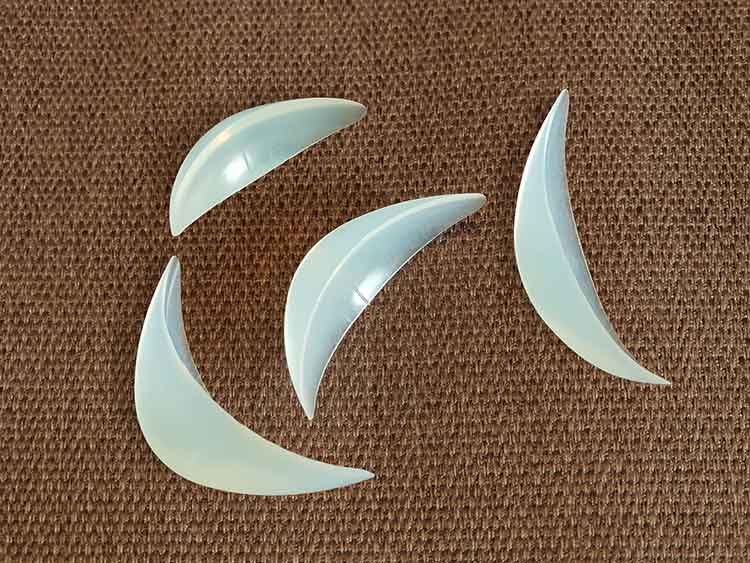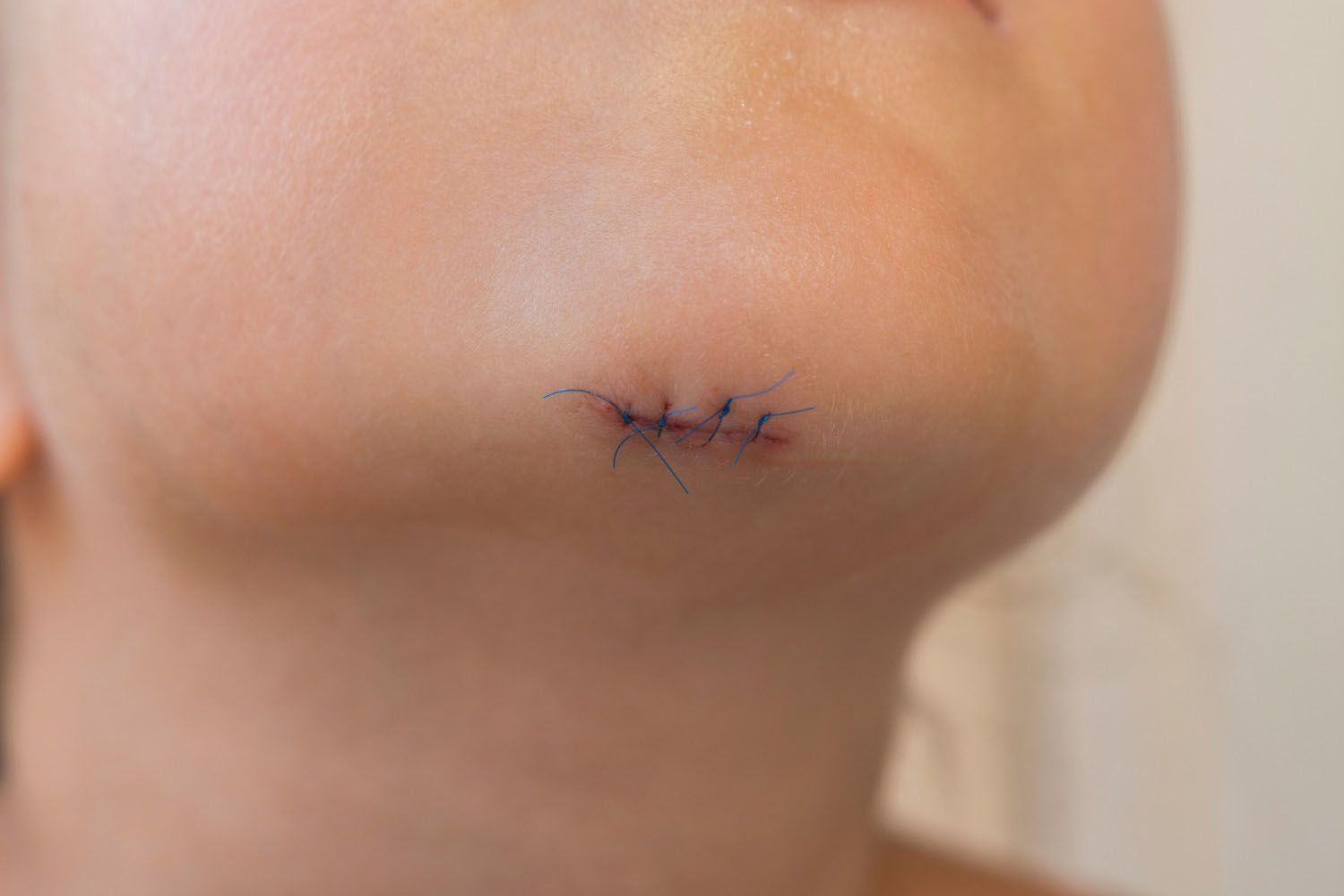This article is reviewed, corrected, and approved by: Julia Weiss CNP| RN | MPH
Chin implants are a popular surgery or procedure for enhancing aesthetics or correcting injuries. It is a synthetic procedure that is inserted through a small incision made either inside the mouth or underneath the chin to create a more defined and balanced facial profile. It is performed by a qualified plastic or maxillofacial surgeon.
Purpose of Chin Implants: Who Needs It?
People seek to put implant in their chin for various reasons, including:
- Weak Chin: Individuals with a weak or recessed chin may feel their lower face lacks definition and balance, leading them to pursue cosmetic surgery with implants to improve their facial proportions.
- Facial Harmony: Some individuals may wish to enhance their facial features by bringing balance to their profile, especially when the chin appears disproportionately small compared to the rest of the face.
- Aging Effects: As people age, they may experience changes in facial structure, including loss of volume in the chin area.
- Trauma or Congenital Defects: Facial deformities caused by trauma or congenital conditions can also be corrected using chin implants. Such persons are a good candidate for this surgery.
The results of a this cosmetic procedure can be long-lasting, contributing to improved self-confidence and facial aesthetics.
What Types of Material Used in Chin Implants?
Implants for chins are made from various materials, with solid silicone being the most commonly used due to its biocompatibility and safety. Other options include , and GORE-TEX, which can also integrate with the surrounding tissues over time.
Types of Chin Implant

Several types of male chin implant and female chin implants are available, each made from different materials and shapes to cater to patients' diverse needs and preferences. There are several common types include:
Solid Silicone Implants
Solid silicone chin implants are one of the most popular choices due to their long-standing safety record and biocompatibility, as discussed earlier. These implants can provide natural-looking results. Solid silicone implants can be easily shaped and adjusted to achieve the desired chin projection during surgery.
Porous Polyethylene Implants (Medpor)
This type of implant is biocompatible and allows tissue ingrowth, which helps secure the implant in place over time. The porous surface promotes tissue adherence, reducing the risk of implant movement.
GORE-TEX Implants
GORE-TEX chin implants are made from expanded polytetrafluoroethylene (ePTFE), a material known for its durability and biocompatibility. Like Medpor implants, GORE-TEX implants also facilitate tissue integration.
Extended Anatomical Implants
Extended anatomical implants augment the chin and provide additional support to the jawline. Jawline implants enhance chin and jaw areas for a balanced facial profile.
Sliding Genioplasty
While not an implant per se, sliding genioplasty is a surgical technique that involves reshaping and repositioning the patient's existing chin bone to achieve the desired projection and contour. This procedure is recommended for complex chin concerns or a personalized approach. To learn more about genioplasty, read this article: Get A Perfect Chin With Genioplasty Before and After.
Chin Implant Before and After
If you're planning to improve your facial aesthetics with an implant, there are some important factors to consider chin implants before & after embarking on this transformative journey.
Chin Implant Before

Here are vital facts to consider before chin implant
- Expert Consultation: Schedule a consultation and consult with a skilled facial plastic surgeon to discuss your goals and understand what's achievable.
- Realistic Expectations: Set realistic expectations for results based on your unique features.
- Health Check: Share your medical history for a health assessment before the chin implant procedure.
- Implant Type: Choose the right implant type and size in line with your surgeon's advice.
- Risks Awareness: Be aware of potential risks like infection, shifting, or scarring.
- Recovery Time: Plan for around 1-2 weeks for initial healing and 4-6 weeks for swelling. After these allotted recovery days of surgery, you can return to work after a consultation with Dr.
- Financial Prep: Consider costs, including potential follow-up visits.
- Support System: Have a support network for emotional and practical assistance during recovery weeks after surgery.
- Explore Options: Consider non-surgical alternatives such as dermal fillers, ultrasound therapy, etc.
Chin Implant After

After undergoing surgery, it is crucial to remember certain things. You will experience some pain, which will subside gradually with pain medications.
There are also possibilities of infections, allergies, and other related issues arising. Therefore, it is important to keep in mind some risk factors.
Risks and Complications of Chin Implant Surgery
Like any other surgical procedure, this surgery has inherent risks and potential complications. Although most patients experience positive outcomes, it is important for those contemplating chin implant surgery to understand the potential hazards.
Some of the common risks and complications that may arise from chin implant surgery:
- Infection: Infections can occur after surgery; in rare cases, they may lead to implant removal. Treatment or prevention of infections usually requires antibiotics.
- Hematoma: Blood collections under the skin can form after surgery, known as hematomas.
- Seroma: Fluid can build up under the skin and may require drainage if it persists.
- Implant Shifting or Displacement: Sometimes, the implant can move or be out of place, causing the look to be uneven.
- Nerve Damage: Chin implant surgery involves working around the nerves in the area, and there is a small risk of nerve damage. This could result in temporary or permanent chin or lower lip numbness.
- Implant Extrusion: Rarely, the implant may become visible or palpable under the skin, requiring its removal.
- Scarring: Incisions made during the surgery can lead to visible scarring, though the scars usually fade over time.
- Unsatisfactory Aesthetic Outcome: Clear communication with the surgeon is crucial to managing patient expectations for the final aesthetic outcome.
- Allergic Reaction: The implant material can cause an allergic reaction in some patients, even though this is rare.
- Bone Resorption: In some cases, bone resorption may occur around the implant, leading to changes in the chin's appearance over time.
- Anesthesia Risks: General anesthesia or sedation is typically used during chin augmentation surgery, and like any surgery involving anesthesia, there are associated risks.
Conclusion
Before deciding to put an implant on your chin, it's important to consult with a qualified surgeon. During this consultation, the individual should discuss their expectations, chin implant before and after risks issues, cost, etc.
F.A.Qs
What is the cost of a chin implant?
A: Each type of chin implant's cost are different, based on what type of process your doctor suggests.
Is there any chance of a chin implant gone wrong situation?
A: Yes, complications like infection, implant shifting, or asymmetry can occur.
What is the recovery or healing time of chin implant surgery?
A: Chin implant recovery time is approximately 1-2 weeks for the initial healing to occur, and it may take an additional 4-6 weeks after surgery for the swelling to subside.
Is there any specific chin implant size chart?
A: Yes, there is a chart size of chin implants; those are small, medium, large, and Xlarge.
Summary: Chin Implant Before and After: What to Consider?
Purpose of Chin Implants:
- Weak Chin
- Facial Harmony
- Aging Effects
- Trauma or Congenital Defects
Types of Material Used in Chin Implants:
- Solid Silicone
- Porous Polyethylene (Medpor)
- GORE-TEX Implants
- Extended Anatomical Implants
- Sliding Genioplasty
Chin Implant Before and After: What to Consider:
Chin Implant Before:
- Expert Consultation
- Realistic Expectations
- Health Check
- Implant Type
- Risks Awareness
- Recovery Time
- Financial Prep
- Support System
- Explore Options
Chin Implant After:
- Potential Risks and Complications
- Infection
- Hematoma
- Seroma
- Implant Shifting or Displacement
- Nerve Damage
- Implant Extrusion
- Scarring
- Unsatisfactory Aesthetic Outcome
- Allergic Reaction
- Bone Resorption
- Anesthesia Risks


